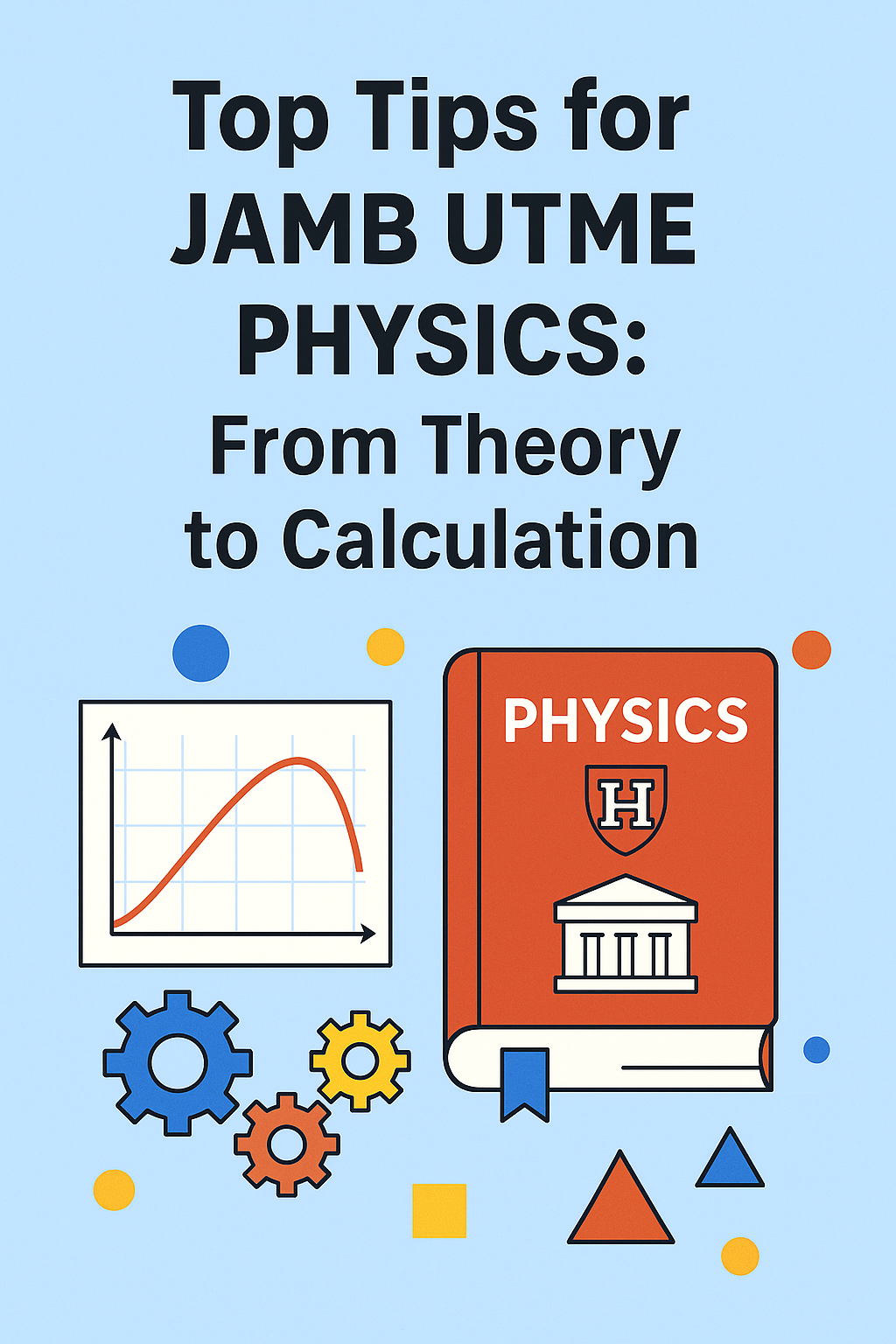1. Introduction
Physics is a pivotal UTME subject for candidates pursuing engineering, medicine, or pure sciences. It tests your ability to apply mathematical skills to understand the natural world mechanics, thermal processes, electricity, and waves. A robust grasp of physical principles and calculation techniques can dramatically improve your aggregate score.
In this guide, we’ll dissect the Physics syllabus, explore question types, and share proven strategies for tackling both conceptual and numerical problems under exam conditions. From mastering formula derivations to leveraging symmetry in problem‑solving, this article equips you with the tools to transform complex scenarios into straightforward solutions.
By blending deep conceptual understanding with timed practice drills, you’ll gain the confidence and speed necessary to navigate the UTME Physics paper effectively. Let’s explore the forces, fields, and formulas central to your success.
2. Deep Dive: Core Topics & Concept Breakdown
2.1 Mechanics
- Kinematics: Displacement, velocity, acceleration; SUVAT equations for constant acceleration.
- Dynamics: Newton’s laws, free‑body diagrams, friction and circular motion.
- Work, Energy & Power: Work‑energy theorem, conservation of mechanical energy, power calculations.
Practice Problem
Problem: A car accelerates from rest to 20 m/s in 5 s. Calculate acceleration and distance covered.
Solution: a = (v–u)/t = 4 m/s²; s = ut + ½at² = 0 + ½×4×25 = 50 m.
2.2 Thermal Physics
- Temperature vs Heat: First law of thermodynamics; specific heat capacity.
- Gas Laws: Boyle’s, Charles’s, and the ideal gas equation.
- Heat Transfer: Conduction, convection, radiation modes and calculations.
Quick Note
Use Q=mcΔT for calorimetry and ensure consistent units (J, kg, °C).
2.3 Electricity & Magnetism
- Electrostatics: Coulomb’s law, electric field and potential.
- Current Electricity: Ohm’s law, series vs parallel circuits, Kirchhoff’s laws.
- Magnetism: Magnetic fields, force on moving charge, electromagnetic induction.
Circuit Analysis
- Equivalent Resistance: Simplify series and parallel networks first.
- Power Dissipation: P=IV = I²R = V²/R.
2.4 Waves & Optics
- Wave Properties: Wavelength, frequency, speed; relation v=λf.
- Sound Waves: Doppler effect; resonance in tubes.
- Optics: Reflection, refraction (Snell’s law), lens formula (1/f = 1/v + 1/u).
Worked Optics Problem
Problem: An object 10 cm from a convex lens with focal length 5 cm. Find image distance and magnification.
Solution: 1/v=1/f−1/u=1/5−1/10=1/10 → v=10 cm; m=v/u=10/10=1.
3. Exam Strategy Tips
3.1 Time Management
- Aim for ~1.2 minutes per question.
- Tackle purely theory questions first (e.g., definitions, law identifications), then move to calculations.
- Flag multi‑step problems to revisit if time permits.
3.2 Structured Problem‑Solving
- Identify: List known quantities and what’s asked.
- Select: Choose relevant principle (e.g., conservation laws, lens formula).
- Solve: Substitute values with proper units; show clear steps.
- Verify: Check dimension consistency and reasonableness of the result.
3.3 Eliminating Incorrect Choices
- Use order‑of‑magnitude checks: e.g., v cannot exceed realistic limits.
- In circuit questions, estimate current direction and relative bulb brightness.
3.4 Diagram & Data Questions
- Annotate diagrams immediately; use a ruler for straight lines.
- For graphs, note axis scales and intercepts carefully.
3.5 Stress and Focus Techniques
- Use the 5‑4‑3‑2‑1 grounding method before the exam: name 5 things you see, 4 you can touch, etc.
- Positive affirmations: “I’ve mastered these formulas.”
4. Subject‑Specific Overview
4.1 Mechanics Mastery
Relate SUVAT problems to real‑world motion scenarios; practice vector decomposition.
4.2 Thermodynamics Insights
Connect gas laws to everyday phenomena breathing, weather balloons.
4.3 Circuit Analysis Skills
Visualize circuit simplifications; practice drawing neat schematics.
4.4 Wave & Optical Phenomena
Observe wave phenomena in daily life echoes, mirages to reinforce concepts.
5. Practice & Resources
5.1 Textbook Recommendations
- Physics for JAMB: Comprehensive Review (Success Publications)
- Objective Physics for JAMB by Alpha Press
5.2 Online Platforms
| Resource | Features | Access |
|---|---|---|
| Physics Galaxy | Video lessons, problem sets | Free/Paid |
| JAMB CBT Portal | Official mock interface | Free |
| HyperPhysics | Concept maps and explanations | Free |
5.3 Mobile Apps
- Complete Physics: Quick quizzes.
- Physics Toolbox: Data collection & simulation.
5.4 Mock Exam Plan
- Schedule four full tests at weekly intervals.
- Analyze performance by topic; adjust study accordingly.
6. Conclusion
Acing JAMB UTME Physics combines conceptual clarity with precise calculation tactics and strategic exam techniques. By mastering mechanics, thermodynamics, electricity, and waves coupled with disciplined practice and time‑management you’ll approach the exam with both confidence and competence.
Commit to regular problem drills, track your progress, and engage with varied resources to shore up weak spots. With the structured approach outlined here, securing a top Physics score is well within your grasp.
Begin today: solve 10 mechanics questions under timed conditions, then review your steps. Your journey to Physics mastery starts now.
